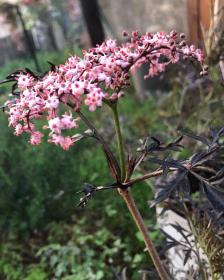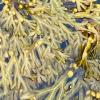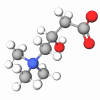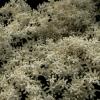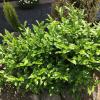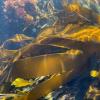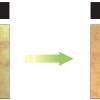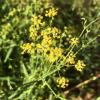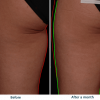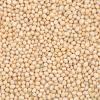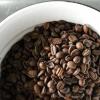Redulite™ is a complex ingredient, a viscous yellowish transparent gel with a characteristic odor. It has the following composition elderberry extract, glyceryl polyacrylate, and ethoxydiglycol. The gel contains no preservatives and can be used in any type of cosmetic formula designed for anti-cellulite treatment, for body firming care, etc...
Redulite™ presents a concept in the struggle against cellulitis. Based on a synergistic combination of the phyto-cosmetic activity of the diuretic extract of elderberry ( Sambucus nigra L.) and the physical osmotic activity of the glyceryl polyacrylate gel, it attacks the problem of the retention of interstitial water in hypodermal adipose tissue by facilitating drainage, mobilization of water and better evacuation thus leading to improvement of the tissue structure.
Redulite™ presents a concept: the fight against water. This approach is based on the combination of a phytotherapeutic effect and a physical effect (osmosis) and must be understood as complementary to lipolytic treatment, classical firming, and collagenolytic care; it does not replace them but completes the treatment efficiently. The aim of Redulite™ is to facilitate the elimination of interstitial water, to decrease the pressure exerted upon the tissue, and thus to improve the macroscopic appearance of the skin, to reduce the neglected parameter of cellulitis, i.e. water retention.
The in vivo study by echography has shown that the "slimming" effect of Redulite™– albeit highly significant and real – is relatively small as compared to the placebo effect, during the 28 days of application. The difference, and thus the original activity of Redulite™, resides in the remanence which might be due to improved restructuring of the hypodermal tissue thus allowing for improved evacuation of water, toxins, and lipolytic metabolites.Redulite™ is thus an indispensable, new complement for slimming, firming, and classical anti-cellulite treatments that employ lipolytic agents. It is furthermore easily incorporated into all types of corresponding products (gels, emulsions, lotions). The recommended concentration is between 15 and 25%, these high percentages result from the osmotic character of the gel that becomes operative only above a certain threshold.
Ingredients
This composition was chosen on the basis of the following considerations:
The Elderberry extract
Two varieties of elderberry (Sambucus ebulus L. and Sambucus nigra L.) are used since antiquity by popular medicine. Diverse virtues are attributed to the fruit, the roots, and the flower extracts (infusions), but both plants are mostly employed for the diuretic effect. Among the classical plants known for this purpose, elderberry is by far the most active. The flowers of elderberry contain essential oils, tannins, sugars, and flavonic glucoside (a derivative of quercetol).
The mechanisms of diuretic action induced by the plant extracts are not well known, and the phenomena are complex; for example, the dose/efficacy relationship is not linear as it has been shown that an oral dose of 10mg/kg has strong diuretic activity, whereas 100mg/kg are inactive We have thus chosen to include an extract of elderberry with the aim of improving, by topical application, the evacuation of interstitial water. Indeed, Riecker describes 1975 certain extrarenal effects of diuretic agents, among which he mentions the elimination of oedemas, the decrease of arterial pressure, and the displacement of interstitial (oedematous) fluids towards the vascularized system. Other authors have studied the possible relationship existing between diuretic agents and lipolysis and have found indirect effects (generation of free fatty acids) without being able to supply biochemical explanations.
Glyceryl polyacrylate
Sederma has acquired over the recent years a vast experience with gels based on glyceryl polyacrylate. These non-drying gels of apparently simple chemical composition, but of complex physical behavior, distinguish themselves, particularly with respect to water. They possess extremely high moisturizing power, they do not readily release the water contained within their molecular structure – even under severe drying conditions –, they absorb water from the atmosphere and through semi-permeable membranes (osmotic effect), they can be used for their microbicidal effect based on physical activity, they stabilize emulsions. On the basis of a number of isolated observations, it seemed interesting to study the possible interaction of this kind of gel with the extra-tissular water in cellulitic skins.This idea is less paradoxical than it may seem. The moisturizing of a very dry horny layer by a gel of this type can be explained by better retention of water in the very superficial layers thanks to the osmotic power of the gel. In the case of a generous application of the gel on the cellulite tissue one may be allowed to surmise that – together with the massaging effect – the osmotic power of the gel will mobilize the water molecules that are imprisoned in the extracellular volume. This mobilization will facilitate the evacuation of water and of the previously mentioned toxins by the blood and the lymphatic vessels, thus reducing the local pressure on the tissue; therefore the nodules and the "orange peel" appearance of the skin caused by the cellulitis will be alleviated.
Ethoxydiglycol
This component is well known for its fluidizing properties which help in the percutaneous penetration of all kinds of active ingredients. In the case of Redulite™, this substance is included in order to facilitate the access of the two active compounds, the elderberry extract and the osmotic Gel to the tissue concerned. At the same time, ethoxydiglycol improves the feel of the gel by decreasing its tackiness.
